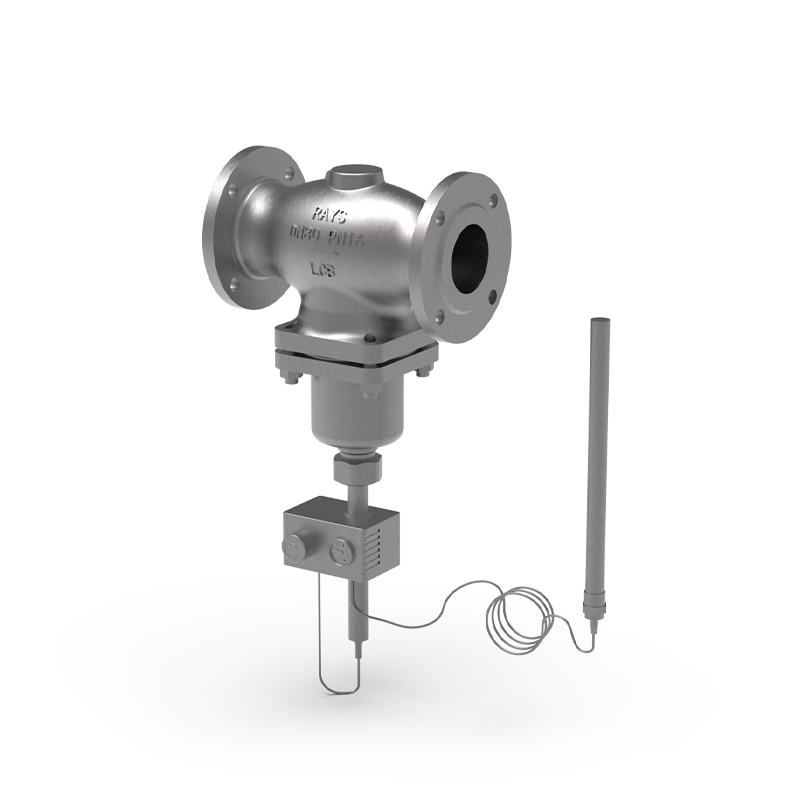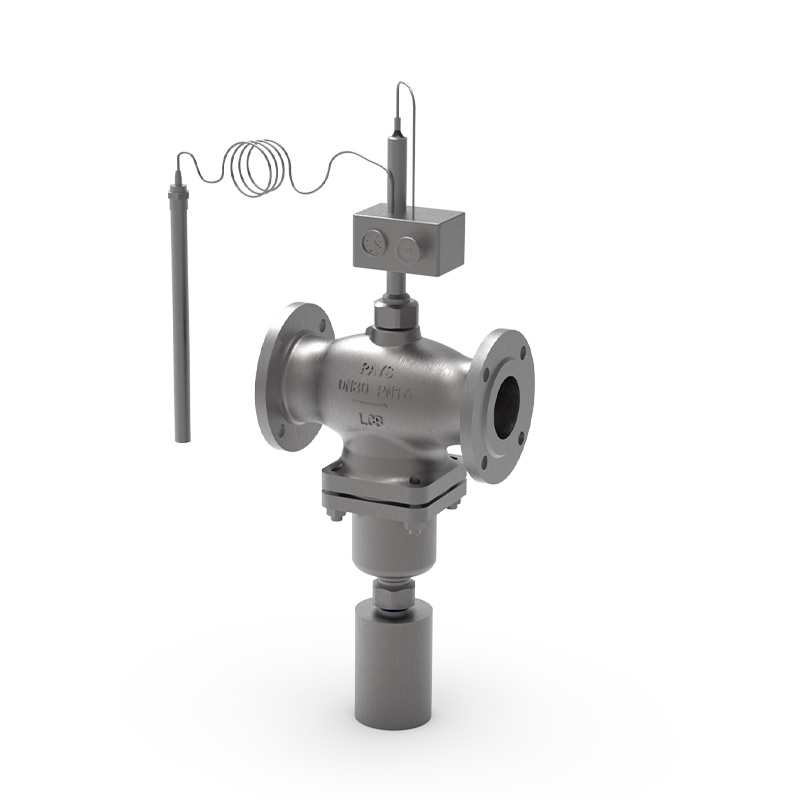 、
、
SO-33006、SO-33106、SO-33017、SO-33117 Self-operated Temperature Regulator (Heating Type)
An energy-saving control valve without external energy sources, used for temperature control of various heaters for non-corrosive liquids, gases and steam, etc.

SO-34006、SO-34106、SO-34017、SO-34117 Self-operated Temperature Regulator (Cooling Type)
An energy-saving control valve without external energy sources, used for temperature control of various heaters for non-corrosive liquids, gases and steam, etc.
Self-operated Temperature Regulator is an energy-saving control device that does not require external driving energy. It relies on the temperature of the medium being regulated as the power source and the changes in the medium to automatically adjust according to the preset value. It integrates detection, control and execution functions into one valve and forms an independent instrument control system.
1. The Self-operated Temperature Regulator is developed by absorbing advanced foreign technology. Key components are imported products, featuring superior performance and reliable quality. It belongs to an energy-saving control system.
2. The Self-operated Temperature Regulator adopts a stainless steel bellows pressure balance valve core to reduce the force on the valve core when the pressure before and after the valve changes. Moreover, it uses an "O" ring sealed valve stem, which has less friction compared to the packing seal form used in similar products, which is conducive to improving control accuracy.
3. The temperature controllers of the heating type (temperature-closed type) temperature control valve and the cooling type (temperature-open type) temperature control valve can be interchanged, demonstrating strong versatility.
The temperature controller adopts a gas bag type over-temperature protection structure, allowing an over-temperature of 100℃, which is far superior to the spring type over-temperature protection (40℃) mostly used both domestically and internationally.
Material: WCB、WCC、LCB、LCC、CF8、CF8M、CF3、CF3M
Nominal Size: DN15~125mm
Pressure Rate: PN1.6~4.0MPa
Temperature Range: ≤350℃
Operator: It relies on the temperature change of the medium being regulated itself as the power source.
Application range: It is applicable to the temperature control of non-corrosive liquids, gases and vapors in industrial sectors such as petrochemical, metallurgy, chemical engineering, energy, papermaking and light industry, as well as urban centralized heating and heating systems, with a temperature range of +80℃ to +300℃.
The Non-Rising Stem Gate Valve is also called the rotating stem gate valve. Stem and nut are arranged on the gate plate, handwheel rotation drive valve stem rotate to lift the gate, usually there is a trapezoidal thread at the bottom of the valve stem and the rotation movement is turned into a linear motion through the limit slot between the valve stem and the gate body and the gate body and the gate, that is, the operation torque is turned into operation thrust. When the valve is turned on, when the height of the gate is equal to the diameter of the valve 1: 1: 1, the channel of the fluid is completely unblocked, but at the run, this position cannot be monitored. In actual use, the vertex of the valve stem is used as a sign, that is, the position that is unmoved as its full opening position. The non-rising stem gate valve has the design characteristics of the ordinary wedge-type gate valve. The valve body has a guide mechanism, which can prevent the gate from rotating when the gate is turned on or closed, ensuring that the seal of the gate on the valve seat is accurate accordingly. At the same time, the wedge valve does not rub with the valve seat before turning off, thereby reducing the wear of the cover and effectively extending the service life of the valve.
Self-operated Temperature Regulator is an energy-saving control device that does not require external driving energy. It relies on the temperature of the medium being regulated as the power source and the changes in the medium to automatically adjust according to the preset value. It integrates detection, control and execution functions into one valve and forms an independent instrument control system.
Cryogenic Gate Valve is an opening and closing device used for fully opening and fully closing. The opening and closing component of ultra-low temperature gate valve is the gate, and the movement direction of the gate is perpendicular to the fluid direction. The gate valve can only be fully opened and fully closed, and cannot be adjusted or throttled. The gate valve has two sealing surfaces, and the most commonly used mode gate valve has two sealing surfaces that form a wedge shape, and the wedge angle varies with parameters.